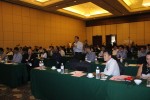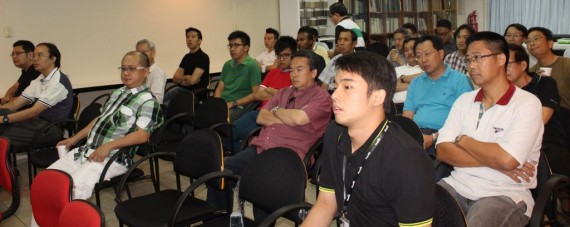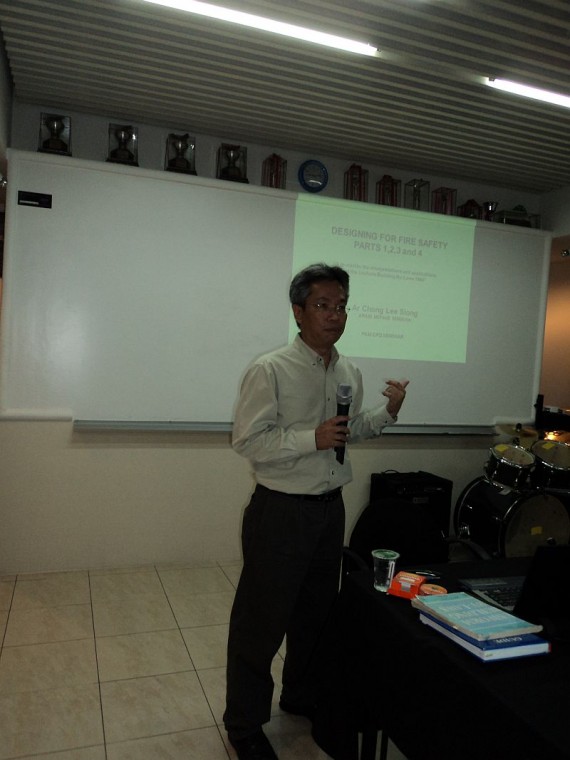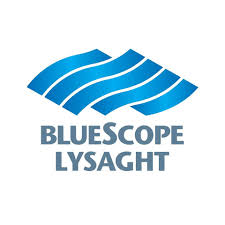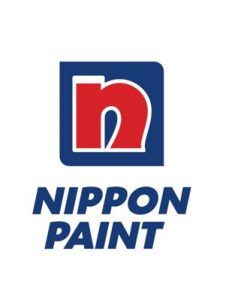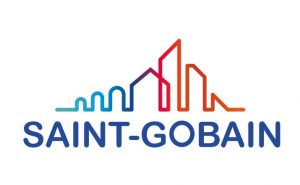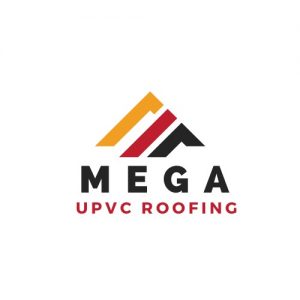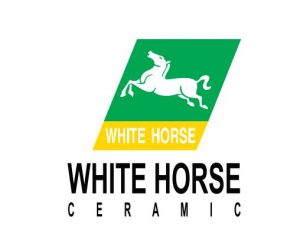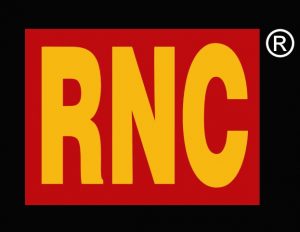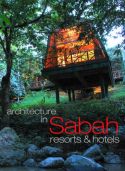PAM Sabah Chapter has organized a Design Conference in conjunction with the World Architecture Day 2014. The event was held on 29th October at the Megellan Sutera Resort Hotel and was attended by its PAM Council President, Ar. Chang Seong Aun, local architects, engineers, surveyors and representatives from the various local authorities.
According to its Chairman , Ar. Victor Wong, who is also the Organizing Chairman of the event, the World Architecture Day is a world wide event that is being held over the month of October each year since 2012, and it aims to bring together architects, planners, engineers and designers to exchange ideas and showcase award-winning works. The inaugural World Architecture Day was held in London in 2012 with the theme “Architects are Cities Changers” while the second one was in New York in 2013, with the theme “Culture – Architecture”.
Ar. Wong further added that the theme this year is “Healthy Cities, Happy Cities” and it raises the awareness on how architects can design healthy spaces, facilities, housing and urban landscape which foster happiness, health and quality of life. It also questions by what means are the architects able to bring to life to cities, to infuse them with energy, to insure their viability and sustainability, to anticipate and heal disorders and to accompany their harmonious development.
Three accomplished guest speakers from the international architectural fraternity had been invited by PAM Sabah Chapter to present topics relating to sustainable architecture, the importance of design analysis in modern architecture, religious buildings from an architectural perspective as well as inspiring a change of mindsets about built environments through good architectural design.
Ms. Ayca Ozcanlar from Arup Singapore shared her expert insights on sustainable architecture in her presentation titled ‘Designing Sustainable Facades‘, stressing to the audience of the importance of implementing sustainable architecture in the face of increasing and alarming global warming effects around the world; weather changes, of which have also been experienced in Sabah. The Turkish-born architect cited several key advancements in facade design technology and discussed the main factors of evaluating a successful and efficient sustainable design facade system. She ended her informative presentation with examples of ongoing projects by Arup Singapore that are currently incorporating sustainable design facades and how good designs add value to building properties. During the Q&A session, Ozcanlar also suggested how existing buildings could also implement sustainable designs to boost better energy efficiency.
Architect and academician Vikram Lall from India presented the topic of ‘Architecture of the Buddhist World‘ and shared his discoveries of ancient building structures built to cater for Buddhism and how its various architectural styles was influenced and shaped by the early cultures and populations around the world that adopted its spiritual philosophies. As a published author on this subject, Lall gave a brief synopsis of his findings on Buddhist architecture from an architect’s perspective, and summarized his research as an attempt to understand the process of architecture as well as the intent and solution behind the various forms of buildings.
Landscape architect Leonard Ng inspired the audience with his presentation of Landscape – The Future of Urbanism. As he conveyed the message of ‘Designing Loveable Cities‘ to the attending crowd, Ng discussed the emotive value of designing with the element of water, using case examples of how Singapore has transformed undesirable urban amenities such as flood drains and illegal dump sites into popular and conducive community activity areas, thus adding intrinsic and monetary value to development properties affected by these urban features. However, in order to succeed in these respects, Ng stressed to that all parties involved including local government departments must be willing to collaborate in their urban design and allow for an overlap of responsibilities in regards to maintenance of the said amenities in its new design and form.
 Guocera Marketing Sdn Bhd followed by Hume Cemboard Industries Sdn Bhd and Nippon Paint Sdn Bhd have successfully conducted their joint CPD seminar on 11th October 2014, Saturday. The event started at 9.00 am and was held at the Teratai Room of Promenade Hotel, Kota Kinabalu. The event was attended by 50 participants, 45 of which were PAM members.
Guocera Marketing Sdn Bhd followed by Hume Cemboard Industries Sdn Bhd and Nippon Paint Sdn Bhd have successfully conducted their joint CPD seminar on 11th October 2014, Saturday. The event started at 9.00 am and was held at the Teratai Room of Promenade Hotel, Kota Kinabalu. The event was attended by 50 participants, 45 of which were PAM members.
The first speaker, Mr. Lim Ann Len from Guocera Marketing Sdn Bhd, delivered his technical presentation on types and properties of ceramic tiles. His presentation was followed by talks from General Manager Mr. David Moyes and Product Development Architect Mr. Suresh Balasekaran of Hume Cemboard Industries Sdn Bhd. The topic highlighted fibre cement, in solid wall and plank forms, as a universal building material suitable for modern tropical design. The final speaker was Ms. Sabrina Chow, the Senior Executive of Nippon Paints Sdn Bhd. She introduced Nippon Paint Fibercote and how to get the perfect finish for fibre cement boards.
The day’s presentation ended at 12.30 pm and all participants were invited for buffet lunch at the hotel.
The dinner was successfully held with the theme of “Sustainable Architecture”. The evening was graced by the presence the Guest of Honor, YB Datuk Teo Chee Kang, Minister of Special Tasks, Chief Minister Department. The evening was also attended by PAM Deputy President, Chairman from Northern and Sarawak Chapters, Heads of Government Departments and Presidents and Chairman of allied professional bodies.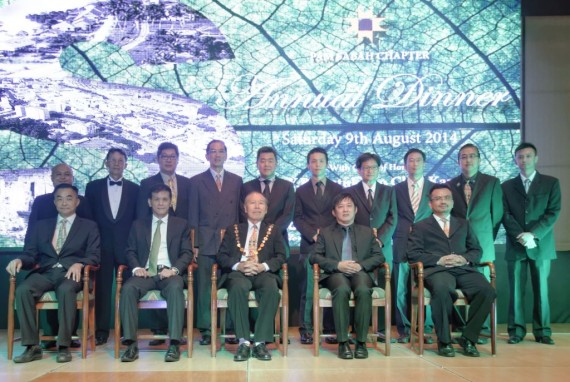
The dinner ended at 10:30 pm with the highlights of the evening, namely the Lucky Draws. It was an entertaining evening dinner with RTM singer, Ms Rozza, dancers from Body Care Dance Studio and a local comedian to share fun with fellow architects, engineers, quantity surveyors, suppliers and all players in the construction and building industry of the region.
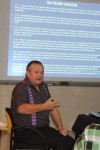 “The Development of Sewage Treatment” CPD seminar was successfully conducted at PAM Sabah Chapter last Saturday (21st June 2014) by Tomher Environmental Sdn Bhd Technical Sales Director, Dr. Frank Wilson. The topic was presented in a historical way following the evolution of sewage treatment from the UK industrial revolution in the 19th century to our present day in Sabah. His anecdotes from his broad and long experience in sewage treatment around the world were the highlight of this workshop.
“The Development of Sewage Treatment” CPD seminar was successfully conducted at PAM Sabah Chapter last Saturday (21st June 2014) by Tomher Environmental Sdn Bhd Technical Sales Director, Dr. Frank Wilson. The topic was presented in a historical way following the evolution of sewage treatment from the UK industrial revolution in the 19th century to our present day in Sabah. His anecdotes from his broad and long experience in sewage treatment around the world were the highlight of this workshop.
Aspects discussed during his workshop include:
- Dr. Wilson’s autobiographical involvement in the sewerage business.
- History about sewerage treatment in general both globally and locally.
- Explanations of various sewerage treatment standards
- Survey study of STPs near Kota Kinabalu (how many are non-operative)
- Explanations of other forms of treatment like cesspits, septic tanks and reed beds.
- Issue of water pollution, eutrophication, FOG (fats, oil and grease), E coli and how dangerous it is to swim at Tanjung Aru beach!
- Details on activated sludge treatment, micro-organism growth curves, sewage screening, trickling filters, rotating biological contractors, trickling filters solids contact, tilted tube/plate clarifiers, v-notch weirs, final treated water standards and dried sludge, sludge presses, hydroponics, pipe trenches, safety hoops and safety rails, extended aeration, Biosolv advanced sewage treatment and many more.
- Some example projects done by Tomher Environmental Sdn Bhd.
There were 42 attendees consisting professional architects and architectural graduates at this event. The workshop started at 9.15 am and end at 11.30 am with tea break provided in the middle.
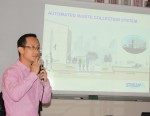 On Saturday, 10th May 2014, a talk on Automated Waste Collection System (AWCS) by Stream Environment Sdn Bhd has been organized at PAM Sabah Mini Auditorium. The speaker was Ir. Chea Thean Teik, the General Manager of Stream Environment Sdn Bhd. Ir. Chea is a qualified Professional Engineer (Mechanical) with over 19 years’ experience in Building’s M&E services, Mechanical Handling Engineering, Project Management, Central Vacuum Systems and Automated Waste Collection Systems.
On Saturday, 10th May 2014, a talk on Automated Waste Collection System (AWCS) by Stream Environment Sdn Bhd has been organized at PAM Sabah Mini Auditorium. The speaker was Ir. Chea Thean Teik, the General Manager of Stream Environment Sdn Bhd. Ir. Chea is a qualified Professional Engineer (Mechanical) with over 19 years’ experience in Building’s M&E services, Mechanical Handling Engineering, Project Management, Central Vacuum Systems and Automated Waste Collection Systems.
Automated Waste Collection System (AWCS) is an environmental technology offering city grade piped infrastructure for municipal solid waste transport system via vacuum technology. Ir. Chea presented the latest method of transporting solid waste through sealed network of pipes and stored in sealed container at a Central Waste Handling Facility (or Bin Centre) within the development or even several kilometers away. This process enhances the garbage collection process to improve urban living and working environment.
AWCS addressed two key concern areas in Municipal Solid Waste Management – Waste Collection & Storage and Waste Transportation. The AWCS system is envisioned to be adopted as the standard way of handling waste for all new development, similar to other utilities such as water, sewerage, gas and power.
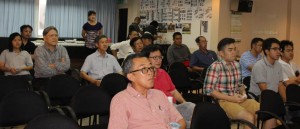 This was not a first time Ir. Chea did a talk for Stream Environment Sdn Bhd at PAM Sabah. He conducted a similar talk previously on 24th November 2012. Ar. Morris Bisoni introduced him before the talk, which began at 9.30 am. There were 22 attendees comprising professional architects, architectural graduates and students from Cosmopoint College. The talk finished at 11.30 am with lunch served.
This was not a first time Ir. Chea did a talk for Stream Environment Sdn Bhd at PAM Sabah. He conducted a similar talk previously on 24th November 2012. Ar. Morris Bisoni introduced him before the talk, which began at 9.30 am. There were 22 attendees comprising professional architects, architectural graduates and students from Cosmopoint College. The talk finished at 11.30 am with lunch served.
KK traffic: Architects offer solution |
|
| 3rd May, 2014
KOTA KINABALU: Good city planning and management are needed in order to reduce the number of cars on the road as we gear towards creating liveable and sustainable cities, said Pertubuhan Akitek Malaysia (PAM) Sabah Chapter. Its chairman Victor Wong said the traffic jam in the State Capital is worsening even though the Kota Kinabalu Local Plan 2020 final draft is ready and the second public consultation of the plan will be held in City Hall from May 8 to 22. He believed that the traffic snarls could be resolved if the development of residence, offices and commercial shops are clustered together within a short radius to enable the public transport to be brought in and eliminate the needs for the citizens to buy cars unnecessarily. “What is happening now in our cities is the lack of integration in the implementation of the different developments and in bringing a public transport system to serve the needs of the clusters,” said Victor at the launching of IPEX 2014 at the Sabah Trade Centre here yesterday. The event was officiated by Assistant Minister in the Chief Minister’s Department Datuk Edward Yong Oui Fah. Victor also urged the authorities to discourage and review city planning that is based on car ownership. “Instead, the city planning should provide an alternative choice for its citizens to choose their mode of transportation such as by foot, bicycles or an organised public transport system,” he said. “We must consider the options to resolve our current woes economically, through good city planning and management while waiting for the monorail to materialise which need an enormous amount of financial resources,” advised Victor. He also suggested to the authorities to encourage mixed development in terms of housing, commercial, sports & recreational, education and industrial over a single project so that a private transport network system can be established. |
PAM Sabah Chapter has just successfully held the historical event entitled “Celebrating 50 years of Architecture in Sabah” on 17.l.14 at the Magellan Sutera Resort.
The Guest of Honor was Deputy Chief Minister cum Infrastructure Development Minister, Tan Sri Datuk Seri Panglima Joseph Pairin Kitingan, representing the Chief Minister, YAB Datuk Seri Panglima Musa Haji Aman.
Two other ex-Chief Ministers were present and they were YBHG Tan Sri Datuk Seri Panglima Bernard Dompok and YBHG Datuk Seri Panglima Yong Teck Lee.
PAM Council President, Ar. Chan Seong Aun, Northern Chapter Chairman, Ar. Parama Nathan and Sarawak Chapter, Ar. Stephen Liew were also present to witness the auspicious occasion.
The Chief Minister’s speech was read out by Tan Sri Datuk Seri Panglima Pairin Kitingan and he called architects in Sabah to incorporate values of the State’s eco wonders, which it is already known globally for, in their respective designs and advised to keep up with global architecture trends.
The programs include highlighting the chronology development of Sabah over the past 50 years; presenting “Certificate of Recognition” to the ex-CMs, senior architects and the talented graduate architects.
Senior Architects
Ar. Abdul Aziz Mahfar
Ar. Cheng Yu Chung
Ar. Chin Yin Tet, Peter
Ar. Datuk Yong Kain Chung
Ar. Kwan Shing Chiong, David
Ar. Lawrence Chin Kok Lum
Ar. Lee Jen Lim, Arthur
Ar. Lu Chen Yin
Ar. Ng Kim Kang, David
Ar. Tan Haw Bin
Ar. Tsen Ken Fah
Ar. Wong Hon Ling
Ar. Wong Kon Yu, Victor
Ar. Wong Yit Sing, Francis
Talented Graduate Architects
Mr. Allen Solomon Chong
Mr. Cheong Kok Ann
Mr. Ho Fui Ken Adrian Dominic
Ms. Hong Yi
Ms. Mak Thur Pei
Mr. Richard Nelson Sokial
 The 38th PAM Sabah Chapter Annual Dinner took place on 28th June 2013 at the Grand Ballroom of Magellan Sutera Hotel, Kota Kinabalu, Sabah and attended by 500 guests.
The 38th PAM Sabah Chapter Annual Dinner took place on 28th June 2013 at the Grand Ballroom of Magellan Sutera Hotel, Kota Kinabalu, Sabah and attended by 500 guests.
The grand evening was graced by YAB. Datuk Seri Musa Hj. Aman, the Chief Minister of Sabah. Added to the list of distinguished guests are PAM President, Ar. Chan Seong Aun with his Deputy President, Vice President, Immediate Past President, Past Council Presidents and PAM Council members; President/Chairman of Professional Bodies and Heads of Government Departments.
The Theme of the Annual Dinner was “Retro”, traditional picked up by alphabetical order. What better word for alphabet “R” than “Retro”. Therefore all backstage deco, photo booth, and banquet hall were designed and set in “Retro” mood.
The event began with the speeches by the Past Chairman Ar. Lo Su Yin and the newly installed PAM Sabah Chapter Chairman Ar. Victor Wong and the introduction of his 2013-2014 office bearers and committee members. The formal part ended with the speeches by PAM President Ar. Chan Seong Ann and the Guest of Honor, YAB. Datuk Seri Musa Hj. Aman. As for the entertainment, dances and songs were all tailored to the swing and beats of the 70s and 80s.
The dinner ended with the highlights of the evening, namely the Lucky Draws. It was an entertaining and fun filled evening dinner shared with fellow architects, engineers, quantity surveyors, suppliers and all players in the construction and building industry!
View here: Annual-dinner-2013 Photos
Reported by:
Ar. Noreen Ooi
 This year’s Edible Architecture competition was held in conjunction with IPEX 2013, at the Sabah Trade Centre on 30th March 2013.
This year’s Edible Architecture competition was held in conjunction with IPEX 2013, at the Sabah Trade Centre on 30th March 2013.
The theme was “Marine City” which was overwhelming response with more than 50 entries comprising of more than 200 students from 8 schools around KK. Students of SM St Michael Penampang emerged champion again. The champion winners, Team SMSM 1 walked away with certificates and cash prizes RM 1,500 also had their names engraved onto Colourcoil Challenge Cup Trophy.
1st runner up was Team Cereal Killers from S.M. Shan Tao and 2nd runner up went to the Rendy The Builder group from SM Lok Yuk, Likas. The Colourcoil Special mention prize goes to Poseidon group from Sabah Tshung Tsin Secondary School.
Co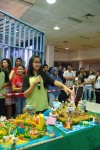 lourcoil Industries, Sabah based pioneer manufacturer of High Performance pre-painted steel as the main sponsor had been proudly sponsoring this event ever since it first started in 2003. Commercial Manager, Mr Peter Wong said, “we are delighted to be involved with PAM Sabah Chapter in this exciting event which we believe augurs well with our vision of creativity by nurturing creative minds and talents as we ourselves are always coming out with new and exciting colour systems every year to give more choices to the building industry”. Colourcoil also gave away a total of five consolations which goes to The Edible group from SM Lok Yuk Likas, The Big Five group from Sabah Tshung Tsin Secondary School, Smokin Aces from SM All Saints, SMSM 4 group from SM St. Michael Penampang and lastly to Epedipibepel group from SMK Bahang Penampang .
lourcoil Industries, Sabah based pioneer manufacturer of High Performance pre-painted steel as the main sponsor had been proudly sponsoring this event ever since it first started in 2003. Commercial Manager, Mr Peter Wong said, “we are delighted to be involved with PAM Sabah Chapter in this exciting event which we believe augurs well with our vision of creativity by nurturing creative minds and talents as we ourselves are always coming out with new and exciting colour systems every year to give more choices to the building industry”. Colourcoil also gave away a total of five consolations which goes to The Edible group from SM Lok Yuk Likas, The Big Five group from Sabah Tshung Tsin Secondary School, Smokin Aces from SM All Saints, SMSM 4 group from SM St. Michael Penampang and lastly to Epedipibepel group from SMK Bahang Penampang .
This year by far, was the greatest number of participants with a total of 50 entries from various schools in Kota Kinabalu made this year’s participants increase more than 50% than last year.
A seminar on “Interpretation of Passive Fire Requirements in the UBBL 1984” was held on 17 November 2012 at PAM Mini Auditorium. 37 attendees comprise of architects and architectural graduates attended this talk.
The speaker was Ar. Chong Lee Siong MIArbs, MIFireE, graduated from Deakin University, Geelong in 1990. He worked in Australia for three years where he developed his keen interest in the study of safety in buildings. Upon returning to Malaysia he contributed to the drafting of the proposed revisions to the UBBL and to the publication “Guide To Fire Safety for Jabatan Bomba dan Penyelamat Malaysia, Pertubuhan Akitek Malaysia and other organizations and is currently in the drafting committee for the new proposed revisions to the Uniform Building By-Laws.
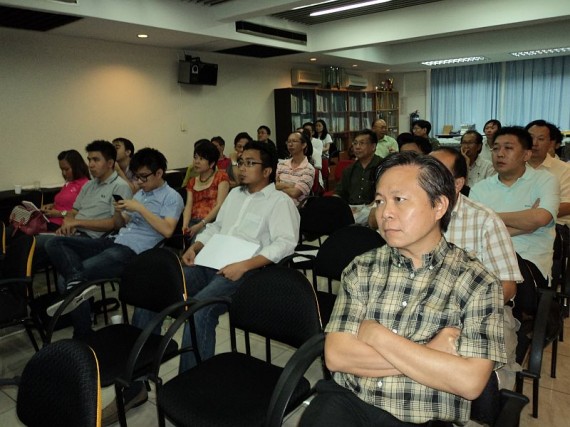 Ar. Chong Lee Siong stated that the fire safety provisions of the Uniform Building By-Laws 1984 is often misconstrued to be restrictive and outdated in its scope, hence limiting Architects’ flair and creativity in the realization of our designs. However, the basic principles of designing for fire safety and the understanding of the characteristics of fire which is the basis of the formulation of the UBBL is still relevant today.
Ar. Chong Lee Siong stated that the fire safety provisions of the Uniform Building By-Laws 1984 is often misconstrued to be restrictive and outdated in its scope, hence limiting Architects’ flair and creativity in the realization of our designs. However, the basic principles of designing for fire safety and the understanding of the characteristics of fire which is the basis of the formulation of the UBBL is still relevant today.
During the seminar he presented in details the fundamental concepts of fire safety, interpreting the UBBL and the practical applications of the relevant fire safety codes in Architecture. Ar. Chong also gave a detail explanation of the 4 basic principles on fire fighting: 1. Evacuation; 1. Passive Containment; 3. Active Intervention; 4. Only one fire at one place at one time.
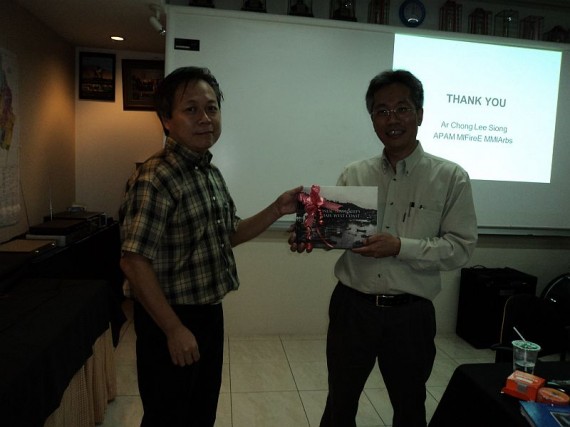 He also briefly spoke about the latest changes to the UBBL (pending on Parliament reading), including the clarification on the perimeter access for fire appliance. Ar. Chong clarified that min 6.1m Access Way is required for Bomba staging; while the Access Road for the passage of Bomba appliances may be less than 6.1m wide.
He also briefly spoke about the latest changes to the UBBL (pending on Parliament reading), including the clarification on the perimeter access for fire appliance. Ar. Chong clarified that min 6.1m Access Way is required for Bomba staging; while the Access Road for the passage of Bomba appliances may be less than 6.1m wide.
The talk was very informative and participants had the opportunity asking many questions, tips and advice. It ended at 1.00pm.
Vote of thanks is accorded to Ar. Chong Lee Siong for the very informative talk and everyone for making their valuable time attending the seminar.
